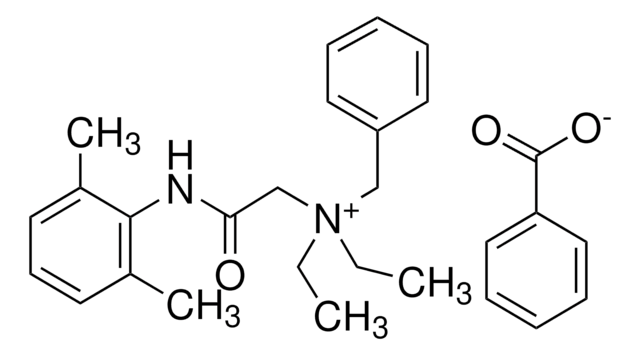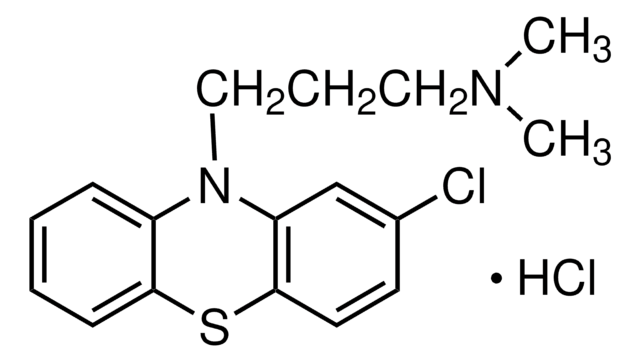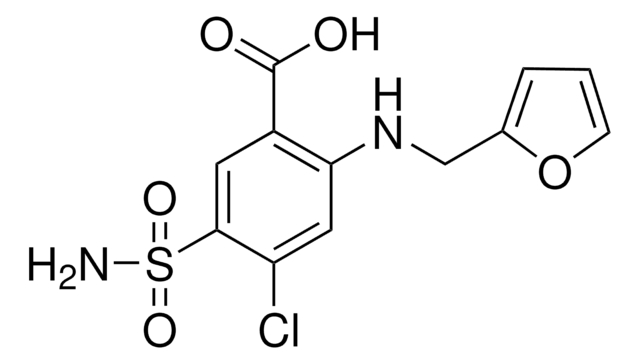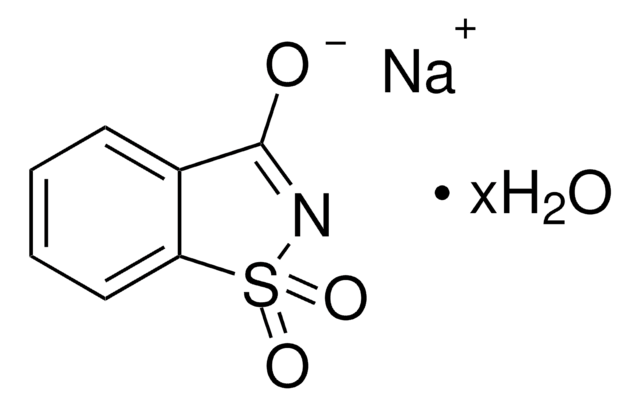D5765
Denatonium benzoate
≥98%
Synonyme(s) :
N,N-Diethyl-N-[(2,6-dimethylphenylcarbamoyl)methyl]benzylammonium benzoate, Benzyldiethyl(2,6-xylylcarbamoylmethyl)ammonium benzoate, THS 839
About This Item
Produits recommandés
Niveau de qualité
Essai
≥98%
Forme
powder
Pf
164-168 °C (lit.)
Chaîne SMILES
[O-]C(=O)c1ccccc1.CC[N+](CC)(CC(=O)Nc2c(C)cccc2C)Cc3ccccc3
InChI
1S/C21H28N2O.C7H6O2/c1-5-23(6-2,15-19-13-8-7-9-14-19)16-20(24)22-21-17(3)11-10-12-18(21)4;8-7(9)6-4-2-1-3-5-6/h7-14H,5-6,15-16H2,1-4H3;1-5H,(H,8,9)
Clé InChI
VWTINHYPRWEBQY-UHFFFAOYSA-N
Vous recherchez des produits similaires ? Visite Guide de comparaison des produits
Description générale
Application
- To prepare anti-gnawing bio-polymer composites using zinc stearate (ZnSt) and capsicum oleoresin (CO) impregnated in silica (SiCO) and polybutylene succinate(PBS).
Mention d'avertissement
Danger
Mentions de danger
Conseils de prudence
Classification des risques
Acute Tox. 2 Inhalation - Acute Tox. 4 Oral - Eye Dam. 1
Code de la classe de stockage
6.1A - Combustible acute toxic Cat. 1 and 2 / very toxic hazardous materials
Classe de danger pour l'eau (WGK)
WGK 2
Point d'éclair (°F)
212.0 °F - closed cup
Point d'éclair (°C)
100 °C - closed cup
Équipement de protection individuelle
dust mask type N95 (US), Eyeshields, Gloves
Faites votre choix parmi les versions les plus récentes :
Déjà en possession de ce produit ?
Retrouvez la documentation relative aux produits que vous avez récemment achetés dans la Bibliothèque de documents.
Les clients ont également consulté
Notre équipe de scientifiques dispose d'une expérience dans tous les secteurs de la recherche, notamment en sciences de la vie, science des matériaux, synthèse chimique, chromatographie, analyse et dans de nombreux autres domaines..
Contacter notre Service technique












